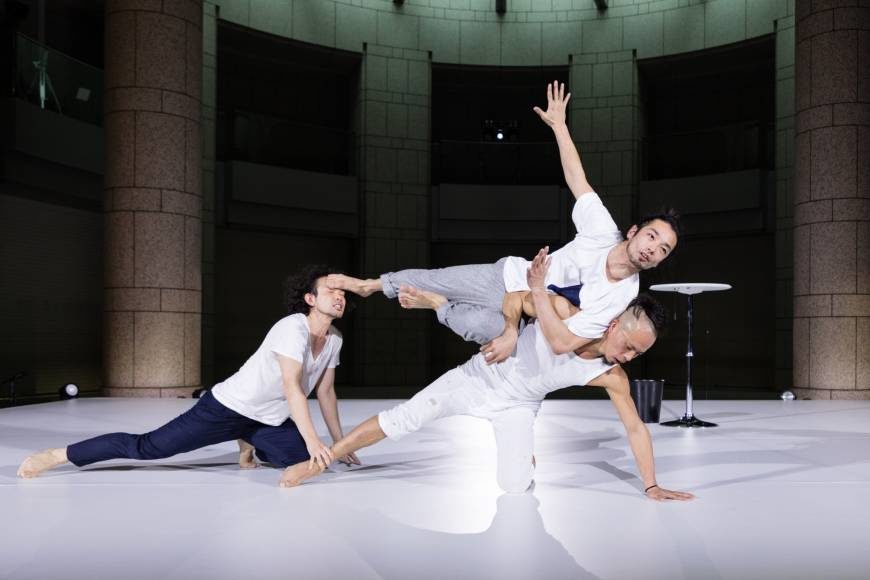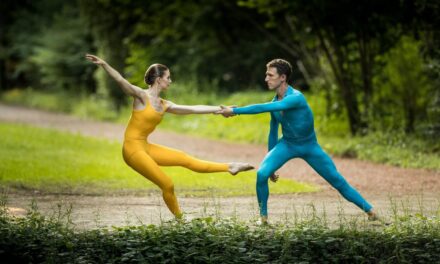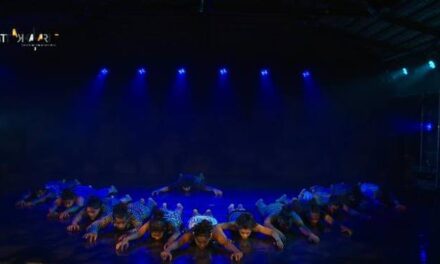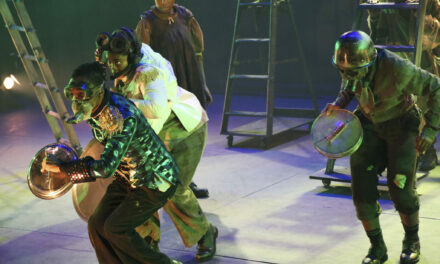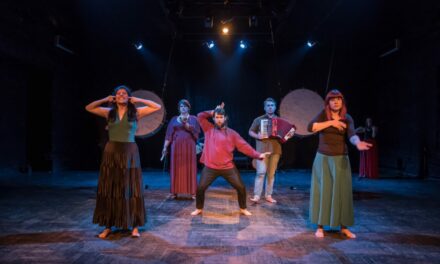Contemporary dance seemed to enter the wider arts consciousness in Japan around the turn of the century when there was a pronounced upsurge in the number of performances, festivals, and competitions.
Reflecting that rising enthusiasm, Takao Norikoshi published the encyclopedic Contemporary Dance Thorough Guide in 2003, which gave a further boost to the art form.
Fast forward 15 years from then, to one delightful spring evening last month, and a lucky few dance enthusiasts could be found mingling with art lovers in the spacious entrance of the Yokohama Museum of Art to witness a one-off curatorial tour de force titled Dan-su/Nude.
Performed by three top contemporary dancers—Shintaro Oue, Mirai Moriyama, and Shintaro Hirahara—the hourlong piece was an inspired program conceived to complement Nude: Art From The Tate Collection, an exhibition currently running at the museum that spotlights Western art themed on the naked human form.
On a specially erected, almost empty white stage featuring nothing but a small high table, the three dancers, wearing simple T-shirts, put on an aggressively physical show performed without any music. Like martial artists, they threw themselves at each other and interwove their bodies with infeasible flexibility and complexity. At times they also pranked, made jokes, and played with massive blobs of golden slime before their unforgettable display ended with a long round of applause.
With Dan-su/Nude still fresh in my mind, I was sure to mark the Tokyo date for the same artists’ Dan-su Series 3 cross-country tour in my own diary.
“Many expressions are used to describe dance works, such as ‘magnificent movement,’ ‘hilariously funny’ or ‘moving,’” says 43-year-old senior troupe member Oue in a group email thread, “but as regards these pieces, I particularly attach great importance to ‘lucky chance’ or ‘pure accident’—because that’s how they develop from our rehearsals when we’re talking and exchanging ideas.”
Mailing from his home in Stockholm, where he has made a name for himself in the European dance scene and performs in productions by Belgium-based Sidi Larbi Cherkaoui, one of today’s top choreographers, Oue explains that to prepare their Dan-su works the three dancers have made it a custom to spend a week at his home.
“In Stockholm we can all just concentrate on dance and leave the hectic Tokyo life behind,” he says. “It’s also important for us to act on spontaneous ideas for new works that stem from our daily conversations while living with each other. We might even pick up bits and bobs from discussions around the dinner table late at night and be able to use them in a Dan-su performance.”
For his part, Hirahara, 37—a core member of Japan’s all-male dance company Condors and the head of OrganWorks—points to each member’s different background and character, as well as their senses of humor, which he sees as the “icing on the cake” regarding their chemistry.
“When we are approaching a new creation together, I get really motivated by Oue’s vision and Moriyama’s deep sense of understanding—there’s an interesting sense of diversity in our work.”
Meanwhile, Moriyama, 33, is a leading stage, film, and TV actor, as well as an outstanding dancer who recently bowled over audiences at the Barbican in London with his performance in the title role of “Pluto” under the direction of Cherkaoui.
“In our very lively and long discussions in Stockholm,” he says, “we sometimes wander from the core point and just ramble on and on despite our best efforts to stick to our basic concept.
“I feel contemporary dance was hard to figure out when it first appeared in Japan, so it spread freely and widely for a while as everyone did their own thing. Now, though, that kind of expansion has stopped and it cannot move an inch. So I’d like to find another description for these Dan-su creations so that we needn’t categorize them using the worn-out term ‘contemporary dance’ anymore”
This new description, judging from each of the dancers’ own comments, would need to encompass a sense of unpredictability, lots of humor, and a dollop of novelty.
Hirahara, however, believes that “vagueness,” a vaunted (and oft-maligned) supposed character trait of Japanese people, should also be key.
Moriyama seemingly concurs, noting the vagueness of the Japanese language, which often leaves the subject of a statement to be inferred rather than stated explicitly.
“This can lead to the negative consequence of abandoning responsibility, but it also creates empty space that makes room for free imagination,” he says.
Finally, though, as if still riding high on all the applause for Dan-su/Nude, Oue rounded off our e-proceedings by cheerfully noting:
“Our new Dan-su Series 3 is like showing the process of putting on a kimono, then gradually stripping off its layers one by one. That is a metaphor, of course, but our performance will scrape off extraneous elements step by step to make the dance more simple, abstract and primitive in the end.”
In the process, he explains, he hopes the trio’s enigmatic production will push its audiences’ imaginations to the limits.
Then, as a postscript, Moriyama points out that as they don’t use music in the Dan-su series, “Breathing noises become a silent language and silent pauses become the physical language of the communication between our bodies.”
Although all the movements and arrangements are precisely choreographed, he says that in their live performances most of the flow is determined by that breathing and those pauses.
“The process of performing inevitably changes depending on the dancers and each one’s condition,” Moriyama says. “In that sense, each person in the audience gets to see a unique piece created by the three of us just for them.”
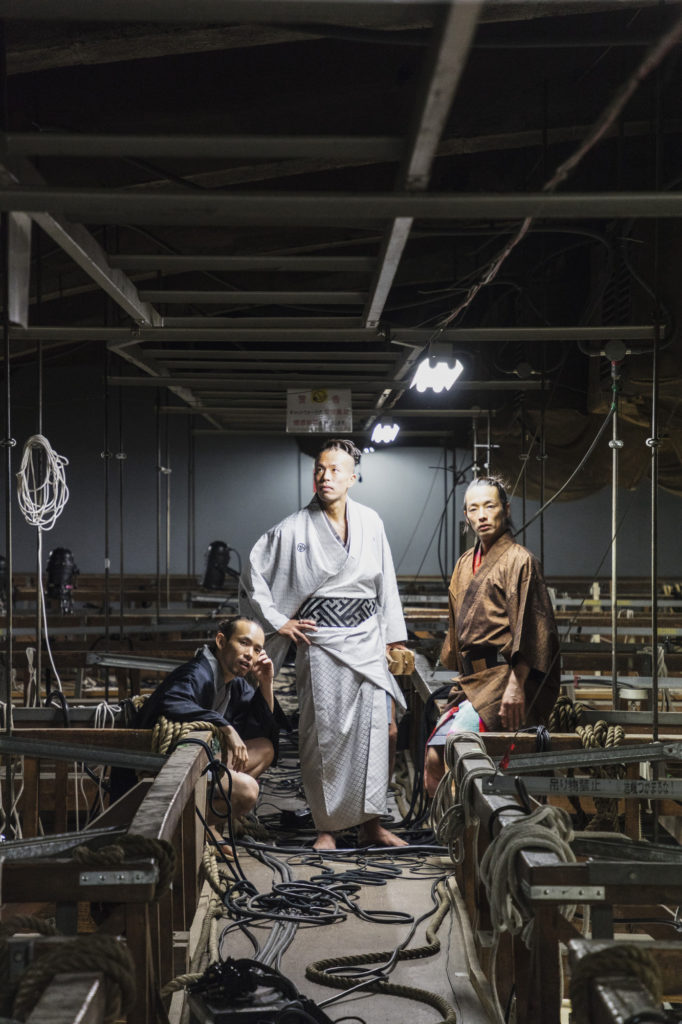
Creative license: Dancers (left to right) Shintaro Hirahara, Shintaro Oue and Mirai Moriyama hope to redefine ideas about contemporary dance in Japan. | MATRON
Dan-su Series 3 will be performed through June 11 across the country. The trio heads to Matsumoto Performing Arts Centre in Nagano Prefecture on May 16 (7 p.m. start; ¥6,000 for general admission and ¥2,000 for those under 18); and Machida Civic Hall in Tokyo on May 19 (3 p.m. start; ¥6,000 and ¥2,000). For more information, visit www.dansu2018.com.
This article originally appeared in Japan Times on May 15, 2018, and has been reposted with permission.
This post was written by the author in their personal capacity.The opinions expressed in this article are the author’s own and do not reflect the view of The Theatre Times, their staff or collaborators.
This post was written by Nobuko Tanaka.
The views expressed here belong to the author and do not necessarily reflect our views and opinions.

